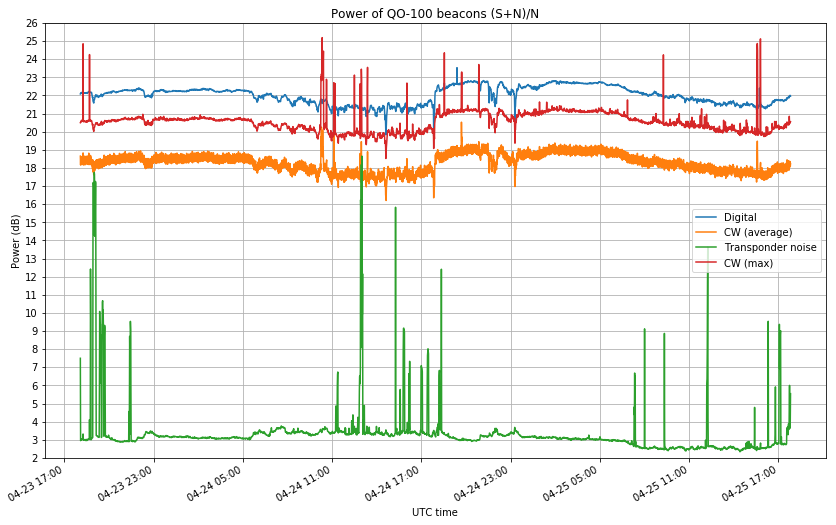The Amateur transponders of Es’hail 2 have their downlink in the 10GHz Amateur band. Even though the path to the satellite through the atmosphere is rather short, in extreme weather conditions it is possible to observe a small amount of fading in the signal. Two days ago there was intense rain over Madrid. As I’m often recording the power of the narrowband transponder beacons and the transponder noise floor, I have examined my data to see if the effect of the rain is visible.
The data is plotted in the figure below. See this post for an explanation of the measurements.

The power of the beacons is not very stable. It can vary up to 2 or 3dB along the course of the day. Therefore, it is not so easy to measure the drop in signal power caused by rain. However, it is noticeable that on April 24, between 05:00 and 17:00 UTC, the power of the beacons varies much more rapidly than usually. A small ripple of 0.5dB of amplitude is visible on the data. I think that this ripple is caused by varying rain intensity. Therefore, the data seems to suggest that the rains two days ago caused up to 0.5dB of fading in the signal.
As seen from my station, the satellite is at an elevation of \(\theta = 33.6^\circ\), so assuming a slant factor of \(1/\sin \theta = 1.8\), so taking a typical height of around 1km for the column of rain (see the corresponding METAR for Madrid airport), we get an attenuation on the order of 0.3dB/km. However, all the measurements used here are too imprecise to obtain any good conclusions. See this related post, in which I measured a 2.5dB increase in the noise floor at 12GHz during a hailstorm, but no change in signal power.